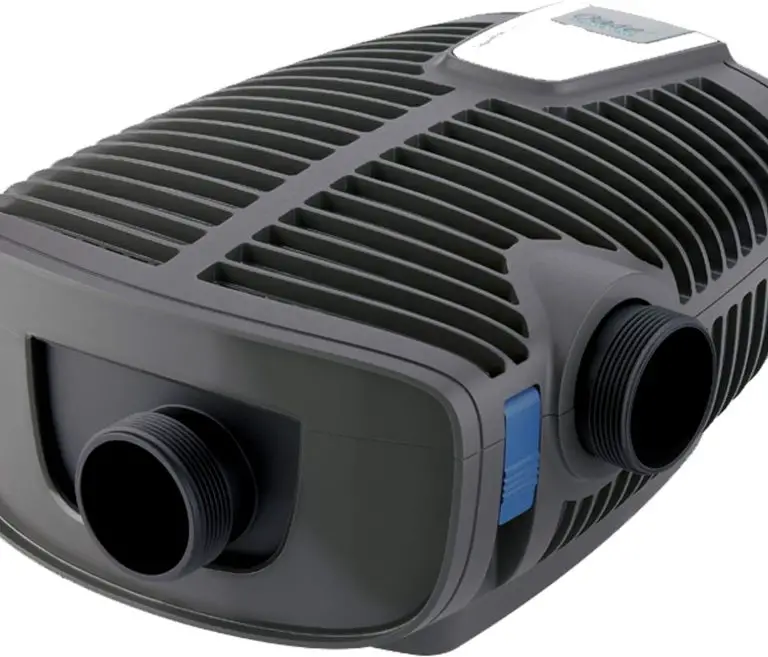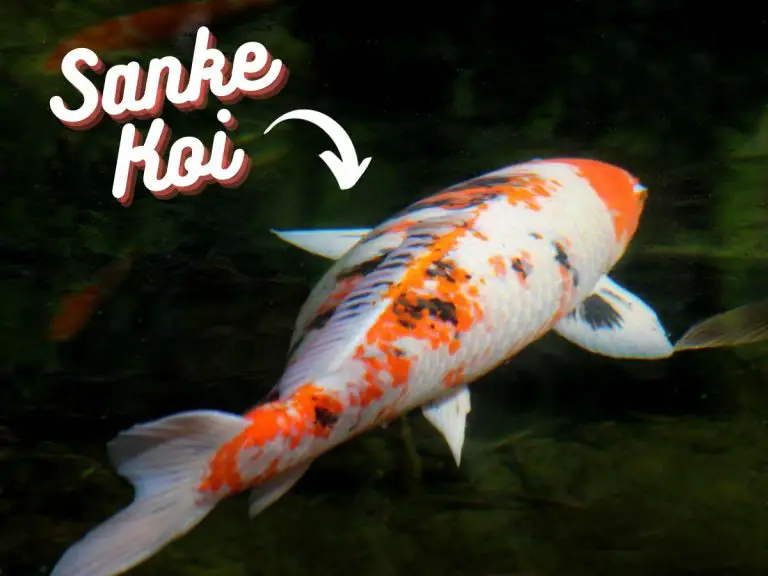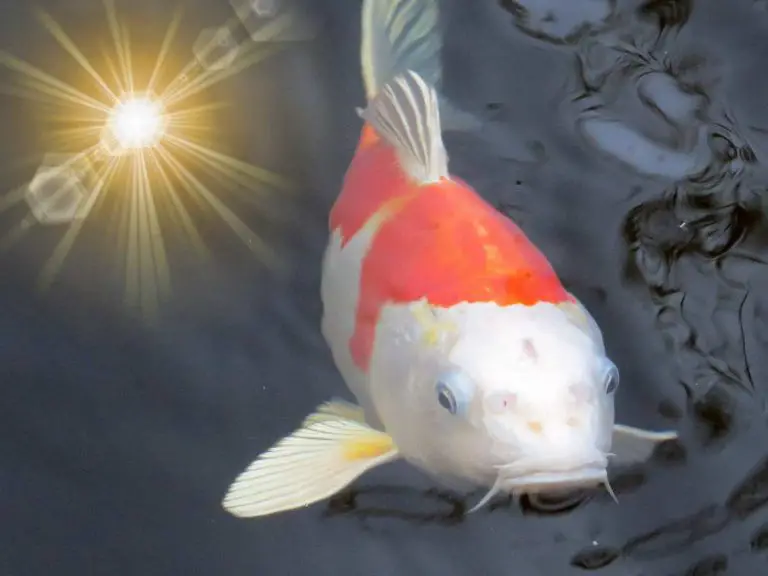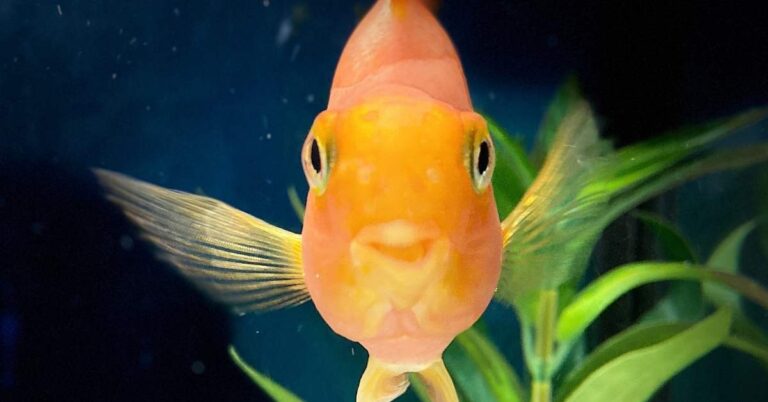Koi Spawning Guide For Beginners And Experts Alike | Critical Tips for Successful Breeding
Are you interested in learning how to breed and spawn koi fish? Look no further! In this comprehensive guide, we will dive into the exciting world of koi spawning. From tips and techniques to best practices, we’ve got you covered.
So, what exactly is koi spawning? It’s the process of facilitating the breeding and reproduction of these beautiful fish. In this article, we’ll explore everything you need to know about koi spawning, including the key factors influencing successful koi breeding, how create the ideal environment, and even the steps to care for koi fry. We’ll also address common issues that may arise during the breeding process and provide troubleshooting solutions.
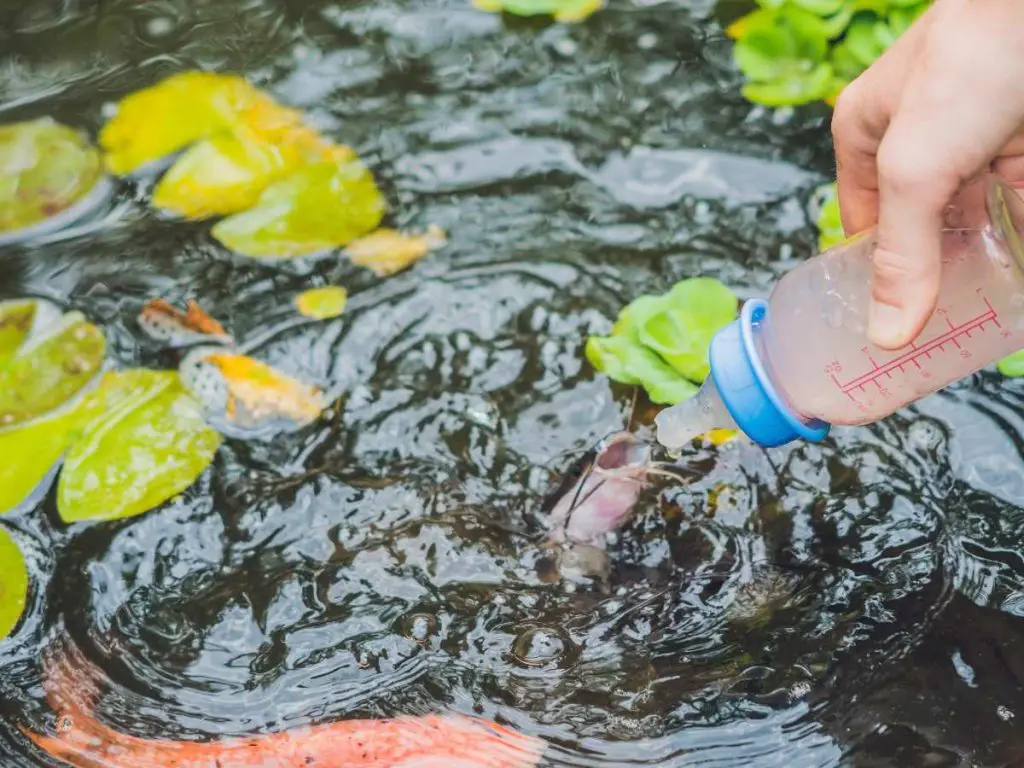
Whether you’re a beginner or an experienced koi enthusiast, this guide will provide you with the knowledge and insights to ensure a successful breeding experience. So, get ready to dive into the world of koi spawning and discover the wonders of bringing new life into your pond.
Koi spawing in ponds: what you need to know
| Term | Definition |
|---|---|
| Spawning | The process of releasing eggs and milt for fertilization |
| Roe | Fertilized koi fish eggs |
| Milt | Fluid containing sperm released by male koi |
| Water temperature | Temperature range required for optimal koi breeding |
| Water quality | Factors such as pH levels, ammonia levels, and dissolved oxygen content |
Koi fish reproduce through a process called spawning, where the female lays eggs and the male fertilizes them externally.
Unlike some other fish species, koi do not have internal fertilization. Instead, the female releases her eggs while the male releases his milt, a fluid containing sperm, over them. This fertilization process typically occurs when the female koi is ready to release her eggs.
During spawning, the female koi fish may lay thousands of eggs, which are then fertilized by the male’s milt. The fertilized eggs, also known as roe, adhere to various surfaces in the pond and hatch within a few days. This incredible reproductive cycle ensures the survival and growth of the koi population.
Key Factors Influencing Successful Koi Breeding
Several factors play essential roles in successful koi breeding. These factors include pond conditions, water temperature, water quality, compatible breeding pairs, and proper preparation. Providing an environment that mimics the koi’s natural habitat helps facilitate a successful reproductive process.
Temperature and water quality are crucial factors to consider when breeding koi fish. Most koi breeders recommend a water temperature around 68°F to 75°F for optimal spawning.
Additionally, maintaining excellent water quality by regularly monitoring and adjusting pH levels, ammonia levels, and dissolved oxygen content is vital for ensuring a healthy breeding environment for your koi (just like it is for treating fin rot and other illnesses).
How to encourage koi to spawn
When preparing for koi spawning, it’s essential to create an environment that is conducive to successful breeding. Your koi pond should meet certain conditions to ensure the health and comfort of your fish.
First, you need to create ideal pond conditions for spawning.
The size of your pond should be suitable for breeding, as smaller ponds may not provide enough space for the koi to spawn comfortably.
Additionally, make sure your pond has adequate filtration and aeration systems to maintain water quality during the spawning process.
Second, you’ll want to create the right temperature and water quality treatments.
Koi fish prefer specific temperature ranges for breeding. Generally, a temperature of around 65-70 degrees Fahrenheit is ideal for triggering the spawning process. It’s essential to monitor and regulate the water temperature throughout the breeding period. Additionally, ensure that the water quality is optimal by regularly testing and maintaining appropriate pH levels and ammonia levels.
How to introduce breeding koi pairs
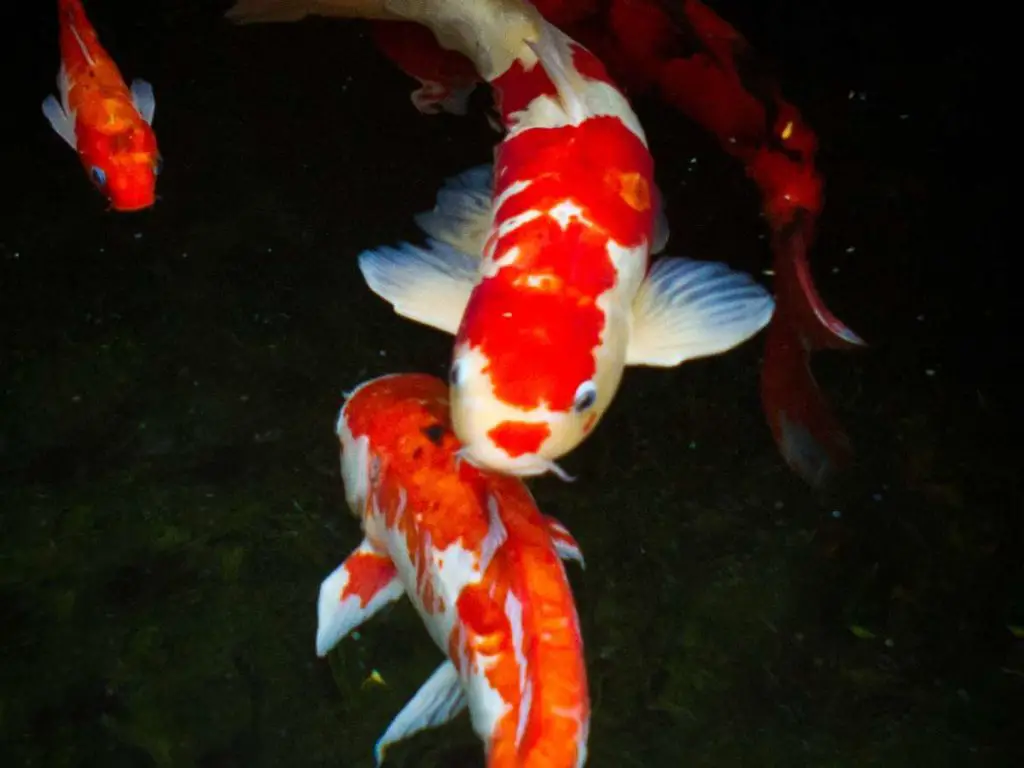
Once your pond is ready, it’s time to introduce the koi pairs for breeding. Selecting compatible fish and preparing them properly is crucial for a successful spawning process.
Before introducing koi pairs, it’s important to ensure that they are compatible in terms of size, age, and genetic compatibility. Choosing fish that are of similar size and age can help avoid potential aggression during the breeding process.
Additionally, consider the genetic traits and patterns you want to preserve in the offspring when selecting the breeding pairs.
To prepare your chosen koi fish for spawning, it’s advisable to provide them with a varied and nutritious diet. This will help ensure that they are in optimal health and condition for breeding. You can supplement their diet with high-quality commercial koi food and live or frozen foods like brine shrimp or bloodworms.
Additionally, avoid overfeeding and monitor their weight to prevent obesity, which can hinder successful breeding.
Essential equipment for koi spawning setup
| Equipment | Purpose |
|---|---|
| Spawning mats or brushes | Provides a surface for egg attachment. |
| Pond netting or mesh | Used for segregating breeding pairs. |
| Breeding tank or separate enclosure | For nurturing eggs and fry. |
| Aquarium heater or temperature controller | For maintaining optimal water temperature. |
| Water test kits | For monitoring and maintaining water quality. |
| Egg incubator (if needed) | For safeguarding and nurturing eggs. |
Stimulating Koi Spawning Behavior – Understand Koi Spawning Season
The first step in stimulating koi spawning is understanding the breeding seasons of these beautiful fish. Koi fish naturally spawn during the spring and summer months when the water temperature rises. This is when you’re likely to observe an increase in their activity levels and courtship behaviors.
During warmer months, female koi fish will produce eggs, and male koi fish will develop sperm. These reproductive organs mature in response to the warming water, triggering the spawning process.
More Techniques to induce koi spawning
If you want to induce spawning in your koi fish outside of their natural breeding seasons, there are several techniques you can try. One technique is to gradually increase the water temperature in your pond. Koi fish are more likely to spawn when the water temperature reaches around 68-75°F (20-24°C).
Another technique is adjusting their feeding patterns. By providing them with a high-protein diet and feeding them smaller meals multiple times a day, you can mimic the natural feeding patterns that trigger spawning in the wild.
In addition to temperature and feeding, you can also use spawning mats to stimulate koi spawning. These mats provide a suitable surface for the female koi to lay her eggs, and the males will fertilize them. Place the mats at a depth of around 18-24 inches (45-60 cm) in the pond and monitor the behavior of your koi fish closely.
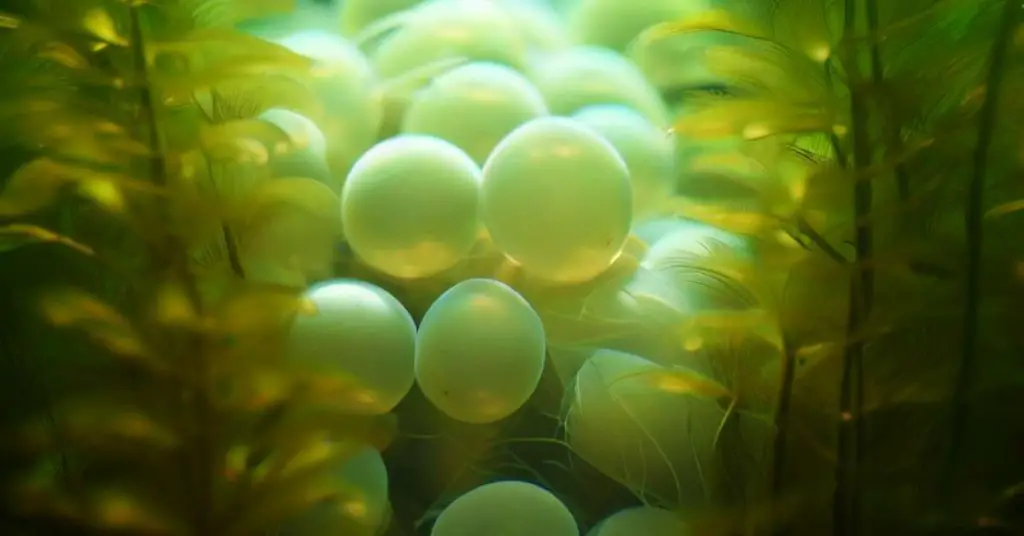
Koi Spawning Behavior and Process
So, you’ve set up the perfect environment for your koi to breed, and now it’s time to keep a close eye on them. But how can you tell if they’re ready to spawn? Well, there are a few key signs to look out for.
Firstly, keep an eye on the female koi’s behavior. As they approach spawning readiness, they may become more active, swimming around the pond more frequently. Additionally, their bellies may appear swollen, indicating that their eggs are developing.
Steps to facilitate successful koi spawning
Once you’ve observed the signs of readiness, it’s time to facilitate the spawning process. Here are a few steps you can take to maximize the chances of successful koi breeding.
During the spawning period, it’s important to monitor the behavior of the koi closely. You may notice the males actively chasing after the females, nudging their bellies, and appearing restless. This is a sign that they are ready to release their milt, or fish sperm.
When you notice these behaviors, it’s a good idea to provide spawning mats or brushes for the koi to lay their eggs on. Spawning mats can be made from materials like synthetic brushes or plastic mesh that mimic the texture of vegetation where koi naturally lay their eggs.
Place these mats in the water at a depth of around 12-18 inches, ensuring they are secure and won’t float away during the spawning process. This will provide a suitable surface for the koi to attach their eggs to.
Once the spawning mats are in place, all you need to do is wait. The female koi will lay her eggs on the mats, while the male koi will follow and fertilize them. This process may take several hours, so make sure you allocate enough time for it to happen.
Collecting and caring for koi fish eggs
After the spawning process is complete, you’ll need to collect the fertilized eggs and take them to a safe environment to hatch. Carefully remove the spawning mats from the pond and transfer them to a separate tank or pond.
Handle the mats gently to avoid damaging the eggs. Once the mats are safely transferred, provide optimal conditions for the eggs to hatch. Keep the water temperature consistent, around 70-75°F, and ensure good water quality by regularly testing and adjusting the levels.
It’s important to note that not all eggs will be viable, and some may turn white or fungus-covered. Remove any eggs that show signs of fungus or white coloration to prevent the spread of infections. Monitor the eggs closely and be prepared to remove any diseased or dead eggs to maintain the health of the viable ones.
With proper care and attention, the koi eggs will begin to hatch after a few days. Once they hatch, the tiny koi fry will start to swim freely, and it’s time to move on to the next stage – caring for koi fry.
Caring for Koi Fry
Nurturing koi fish eggs is an essential part of the breeding process. It requires delicate care and attention to ensure the survival and growth of the fry. Here are some tips and techniques to help you successfully care for koi fry.
Nurturing koi fish eggs
When it comes to egg incubation, there are a few key techniques to keep in mind. First, you’ll need a dedicated incubation tank or tray where you can carefully place the koi eggs. Make sure the tank is clean and free of any potential contaminants.
Next, it’s important to maintain optimal water conditions for the eggs. The water temperature should be around 70-80 degrees Fahrenheit, and the pH level should be between 7.0 and 8.0. This helps create a suitable environment for the eggs to develop and hatch.
During the incubation period, you should also monitor the eggs closely. Look out for any signs of fungus or abnormalities. If you notice any eggs with fungus, remove them immediately to prevent the spread to other healthy eggs.
To protect the eggs from predation and diseases, you can consider using egg incubation nets or baskets. These provide a physical barrier between the eggs and potential threats, ensuring their safety and increasing their chances of survival.
Feeding and raising koi fry
Once the koi fry hatch, their nutritional needs change, and it’s important to provide them with proper nutrition to support their growth. Start by offering them finely crushed or powdered commercial fry food. As they grow, you can gradually transition to larger food particles.
Feeding koi fry should be done in small, frequent meals throughout the day. This helps ensure they receive enough nutrition without overfeeding, which can lead to poor water quality and health issues. Aim to feed them about 4-6 times a day, giving them only what they can consume in a few minutes.
In addition to proper feeding, maintaining optimal water conditions is crucial for the growth and health of koi fry. Monitor the water temperature, pH level, and ammonia levels regularly. Make sure to perform water changes as needed to keep the water clean and free of toxins.
Creating a suitable environment for fry growth also involves providing adequate space. As the fry grow, they’ll need more space to swim and thrive. Gradually transfer them to larger tanks or ponds as they outgrow their current habitat.
Troubleshooting Common Issues in Koi Breeding
So, you’ve set up your koi spawning paradise, everything seems perfect, but wait – there’s a hiccup! Don’t worry, we’ve got your back. Let’s tackle some of the potential issues you might face during koi breeding and find solutions together.
1. Egg funguses and infections
Uh-oh, fungus among us! ????
Sometimes, you may notice fungus or infections on your precious koi fish eggs. This can be caused by poor water quality or bacteria infiltrating the eggs. But fear not, we have a few solutions to get those little ones back on the healthy track.
2. Male koi aggression during spawning
Whoa, buddy! Male koi can sometimes get a little too territorial during spawning, causing trouble for the females. This aggression can lead to damaged eggs or stressed-out females. Let’s find ways to address this aggression and keep the peace in the pond.
It’s essential to understand that this aggressive behavior is rooted in the male koi’s natural instinct to reproduce. During spawning, males often chase females to encourage them to release their eggs, which the males then fertilize. However, in their eagerness, males can sometimes become overly assertive, nudging and bumping the females more forcefully than necessary. This not only risks harming the female but can also lead to a significant loss of eggs.
To mitigate this behavior, pond owners can take several proactive measures. Firstly, providing ample space for the koi to move around can reduce the intensity of the chase. Spacious environments allow females to find refuge and rest when needed. Additionally, introducing plants and other natural barriers can create hiding spots for females, offering them a brief respite from the persistent males.
Another effective strategy is to monitor the male-to-female ratio in the pond. Ideally, having a higher number of females compared to males can reduce the intensity of the aggression, as the males’ attention gets divided among several females. If you notice one particular male being excessively aggressive, consider temporarily isolating him to give the females a break.
Lastly, remember that while some level of aggression is natural during spawning, it’s crucial to ensure the safety and well-being of all fish in the pond. Regularly check for signs of injury or stress among the females and be prepared to intervene if necessary. With a bit of observation and proactive management, you can ensure a more harmonious spawning season for your koi.
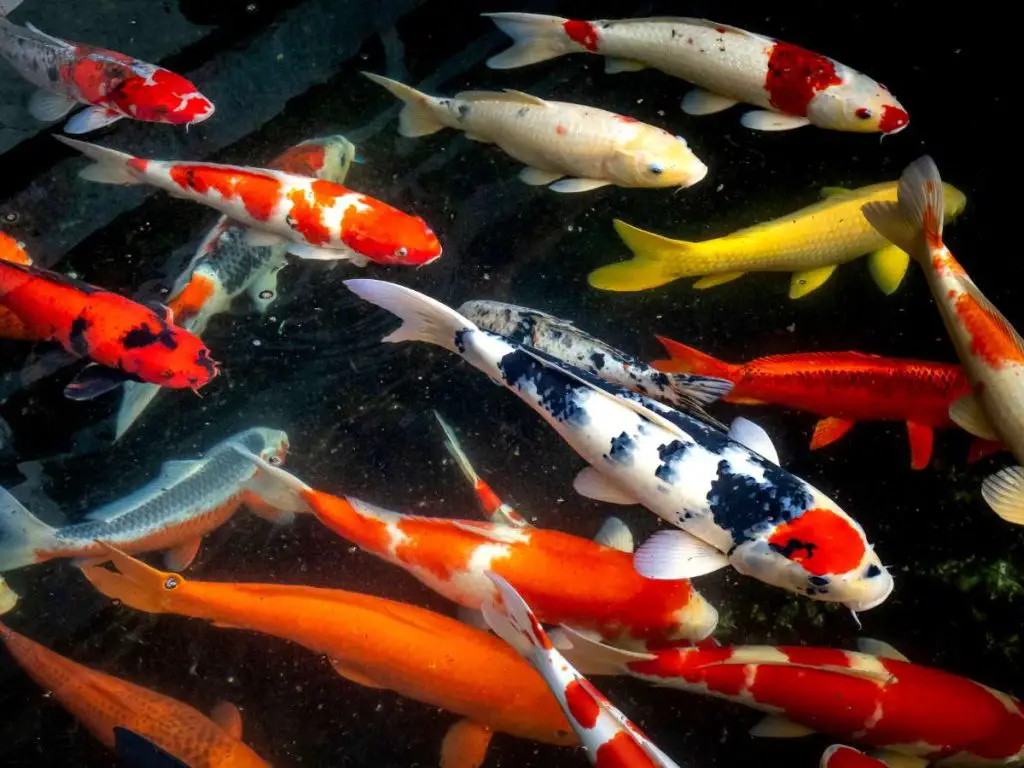
Frequently asked questions and solutions for koi breeding problems
- Q: Help! My koi fish are eating their own eggs. What do I do?
A: Don’t panic! This behavior is not uncommon. You can try removing the eggs and incubating them separately or using spawning mats to keep the eggs safe from hungry parents. - Q: What if my koi fish are not showing any signs of spawning?
A: It’s alright, patience is key. Ensure the water temperature and quality are optimal, and try adjusting their diet to encourage spawning behavior. If all else fails, you can consult a professional. - Q: How do I prevent predators from eating the koi eggs?
A: Nature has its ways, but you can protect those precious eggs by using netting, mesh screens, or even floating plants to create barriers and make it harder for predators to access the eggs. - Q: What should I do if the koi fry are not growing as they should?
A: Don’t fret! Check the water quality parameters, ensure you’re providing a balanced diet, and consider adding supplemental feed to promote healthy growth. Monitoring their growth and seeking advice from experts can also be helpful.
Conclusion: Get ready for fry!
| Phase | Key Takeaways & Actions |
|---|---|
| Understanding Koi Breeding | – Koi reproduce through external fertilization. – Female koi lay thousands of eggs, which are then fertilized by the male’s milt. |
| Creating the Ideal Environment | – Ensure water temperature is around 68°F to 75°F. – Monitor water quality: pH levels, ammonia levels, and dissolved oxygen content. |
| Selecting & Preparing Koi Pairs | – Choose koi pairs of similar size and age. – Consider genetic traits for offspring. – Feed a varied and nutritious diet. |
| Stimulating Spawning | – Adjust water temperature to around 65-70°F. – Use spawning mats for egg attachment. – Monitor koi behavior for signs of readiness. |
| Caring for Koi Eggs & Fry | – Transfer fertilized eggs to a separate tank. – Maintain water temperature around 70-75°F. – Feed fry with finely crushed commercial food. |
| Troubleshooting Common Issues | – Address egg funguses promptly. – Manage male koi aggression.<br>- Protect eggs from predators using netting or mesh. |
So there you have it, a comprehensive guide on how to facilitate the breeding and spawning of koi fish. We covered a lot of ground, so let’s quickly recap the main points:
- Understanding the koi breeding process and the factors that influence successful breeding
- Creating the ideal environment for koi spawning, including pond conditions and water quality
- Selecting compatible koi pairs and preparing them for breeding
- Stimulating spawning by adjusting water temperature and using spawning mats
- Observing the signs of koi readiness to spawn and facilitating the process
- Caring for koi fry, from nurturing the eggs to feeding and raising the fry
- Troubleshooting common issues in koi breeding, such as egg funguses and male aggression
Now, armed with this knowledge, it’s time to take action and apply these techniques to your own koi breeding endeavors. Remember, patience is key, and don’t be discouraged by any challenges that may arise along the way. Share your experiences and learn from others in the comments section below. Together, we can create thriving koi communities and enjoy the beauty and grace of these marvelous fish. Happy breeding!
Related Questions
Can koi fish breed in a regular fish tank?
Absolutely! Koi fish can breed in a regular fish tank, although it is important to ensure that the tank meets the necessary conditions for successful breeding. Maintaining proper water quality, providing sufficient space, and creating suitable breeding environments can help facilitate koi spawning in a tank.
How long does it take for koi eggs to hatch?
The time it takes for koi eggs to hatch can vary depending on various factors such as water temperature and breeding conditions. In general, koi eggs take around 4 to 7 days to hatch. It is important to closely monitor the eggs during this time and provide appropriate care to ensure their successful development.


